We love gardening for the joy it gives us and the life it brings to our gardens. There’s nothing quite like filling up our outdoor spaces with colorful annuals, long-lasting perennials, or even a home-grown vegetable garden! But what about the not-so-glamorous side of gardening?
As fellow gardeners, we understand the time, effort, and patience needed to maintain a healthy landscape. So when weeds pop up, we too go into battle mode, ready to rid and defend our lawns of the pesky intruders.
What Are Weeds, Anyway?
Simply put, weeds are any plant deemed “undesirable,” or one that grows in an undesired location—an unwelcome surprise. Not only are they an eyesore, but they also carry disease and are therefore a danger to surrounding plants.
Weeds are divided into three sections, Annual Weeds, Perennial Weeds, and Lawn Weeds.
- Annual weed—Lives for one growing season
- Perennial weed—Comes back each year
- Lawn Weeds—Common weeds that pop up in lawns
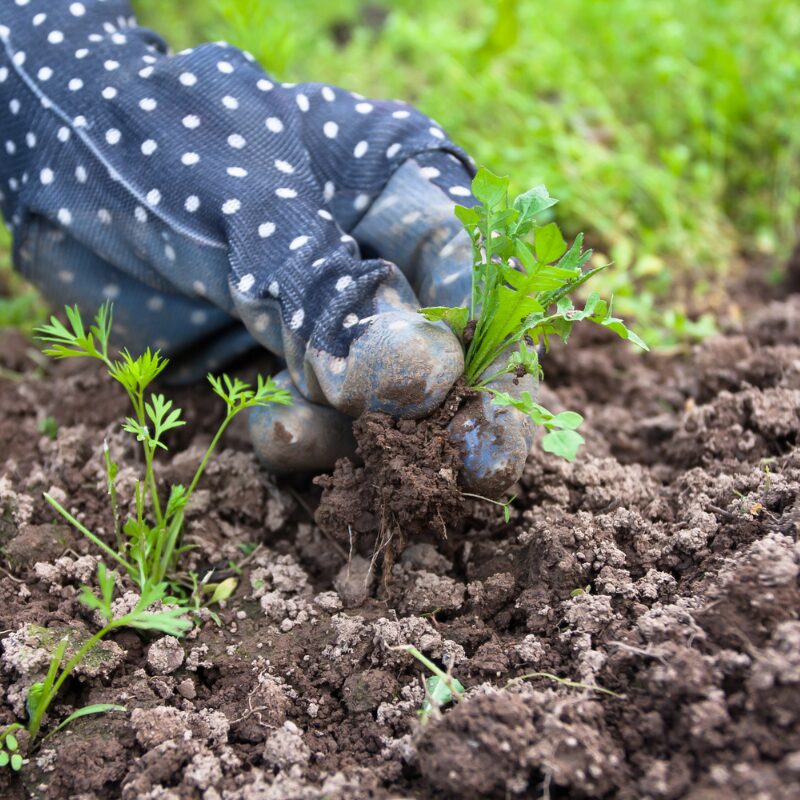
No matter the type, all weeds steal nutrients from the plants we actually invited to our lawns. With this in mind, it’s important that we try to get rid of them as soon as possible!
First—Identify the Type of Weed
When it comes to killing weeds, it helps to know exactly which type they are first. There is no such thing as a universal weed repellent. A treatment that works on one type of weed might actually make the problem worse when used on another. To avoid further damage to your lawns and gardens, be sure to identify the type of weed before treating it.
Here are some of the most common garden weeds and how to treat them:
Field Bindweed
Characteristics: Field Bindweed, also known as morning glory, can be identified by its trumpet-shaped flowers. This weed has a solid root system, making it even harder to get rid of.
How to get rid of it: Pull by hand (but leftover roots will resprout) or Herbicide
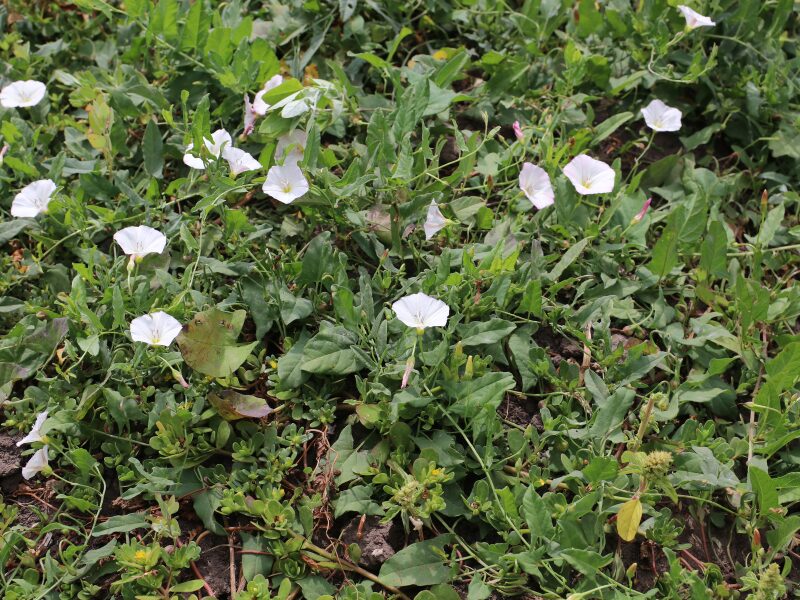
White Clover
Characteristics: White clover is a perennial weed that is easily identified by its white flowers.
How to get rid of it: Pull by hand.
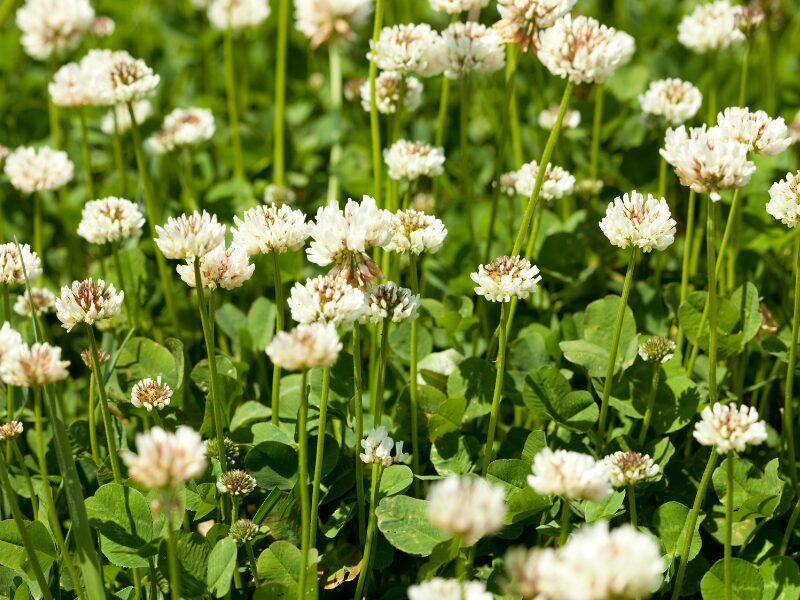
Common Ragweed
Characteristics: Known to be the bane of allergy season, common ragweed is an annual weed.
How to get rid of it: Routine lawn mowing or weed and feed fertilizer.
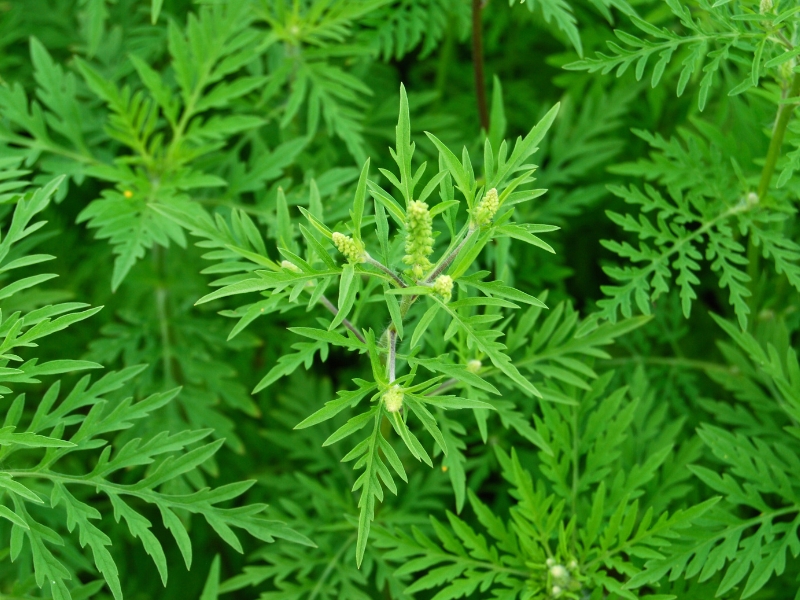 Common Ragweed
Common Ragweed
Glechoma Hederacea
Characteristics: Also known as creeping charlie and originally thought to make a good groundcover because of its fast growing green leaves, this weed quickly became an invasive nuisance.
How to get rid of it: Broadleaf herbicide
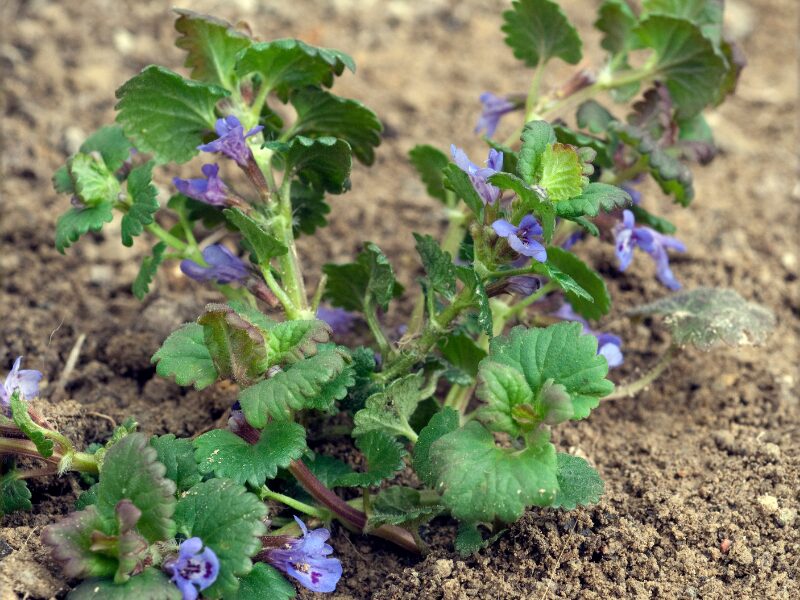
Crabgrass
Characteristics: Crabgrass, although technically grass, is not used to create lush lawns. It is identified by its thick, mounded shape.
How to get rid of it: Pull by hand or pour boiling water over it.
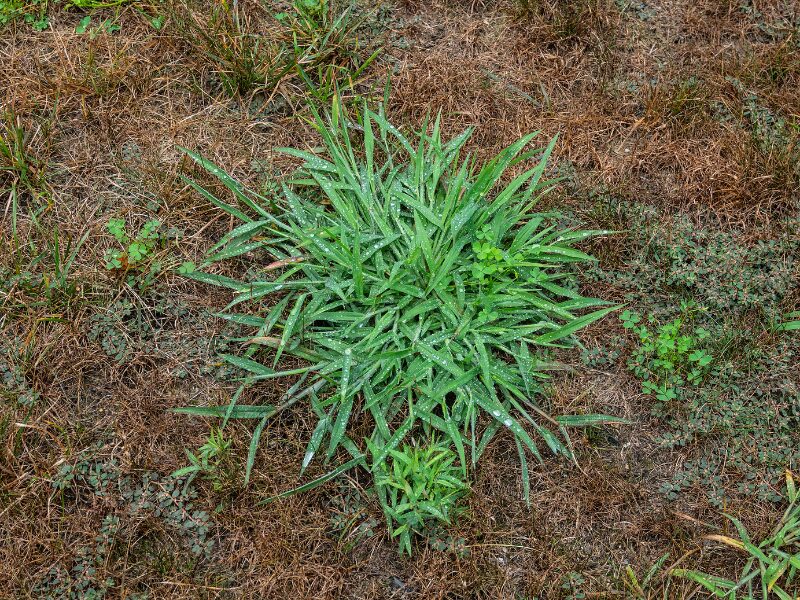
Dandelions
Characteristics: A perennial weed, dandelions are known for their bright yellow bloom that eventually turn into the white puffballs used to make wishes (or spread more seed). A dandelion’s taproot is said to be from 6-18 inches long.
How to get rid of it: Pull by hand or broadleaf herbicide.
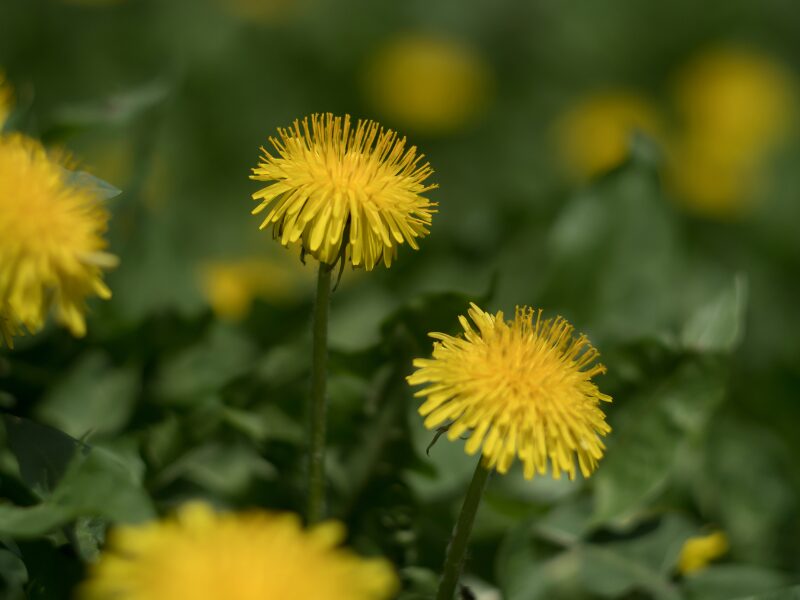
Helpful Tools for Removing Weeds
Weeding your garden doesn’t have to be back breaking work! With the help of these tools, you might have an easier time ridding your yard of weeds.
[/vc_column_text][/vc_column][/vc_row][vc_row][vc_column width=”1/3″][vc_single_image image=”29431″ alignment=”center” style=”vc_box_rounded”][vc_column_text]
Weed Puller
[/vc_column_text][/vc_column][vc_column width=”1/3″][vc_single_image image=”29432″ alignment=”center” style=”vc_box_rounded”][vc_column_text]
Hand Weeder
[/vc_column_text][/vc_column][vc_column width=”1/3″][vc_single_image image=”29435″ alignment=”center” style=”vc_box_rounded”][vc_column_text]
Garden Fork
Tips for Preventing Weeds
Weeds have a habit of coming back, even when we’ve done our best to kill them off. Here are a few tips to help prevent more from popping up:
- Mulch is your friend! Mulch blocks sunlight, which means weeds won’t have a chance to grow or push through the layer of mulch.
- When you see it, get rid of it. It’s best to get rid of weeds when they’re still small.
- As you’re weeding, consider bringing a trash bag or wheelbarrow with you so that you can dispose of any pulled weeds. If they’re left on the soil, they can still spread their seeds!
For more tips, see our blog Gardening Hacks Found in the Kitchen.
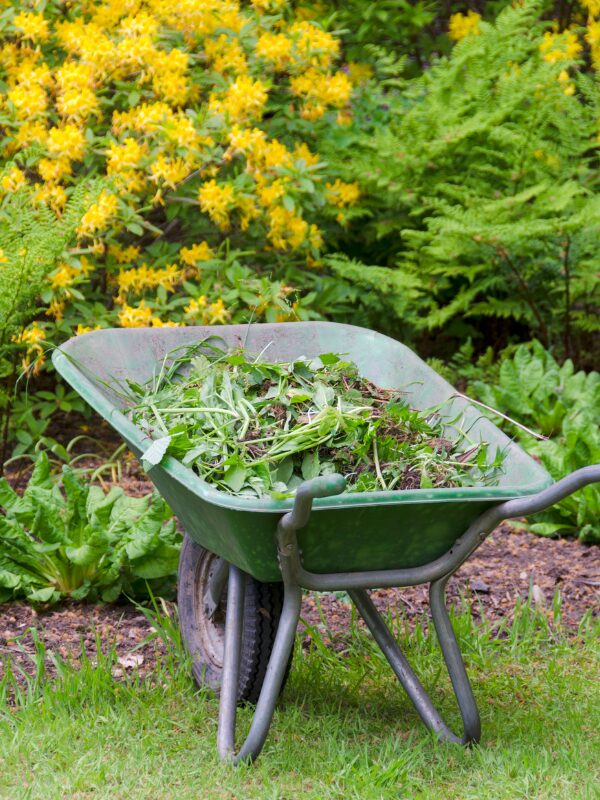
Weeds might be the party crashers of the gardening world, showing up uninvited and wreaking havoc on our gardens, but there are ways to ensure they don’t ruin the fun! Identification is the first step in removing weeds. From there, you can find that specific weed’s weakness and tackle it head on.
We hope this guide helps you identify which ones might be popping up around your garden.
Happy planting (and weeding)!

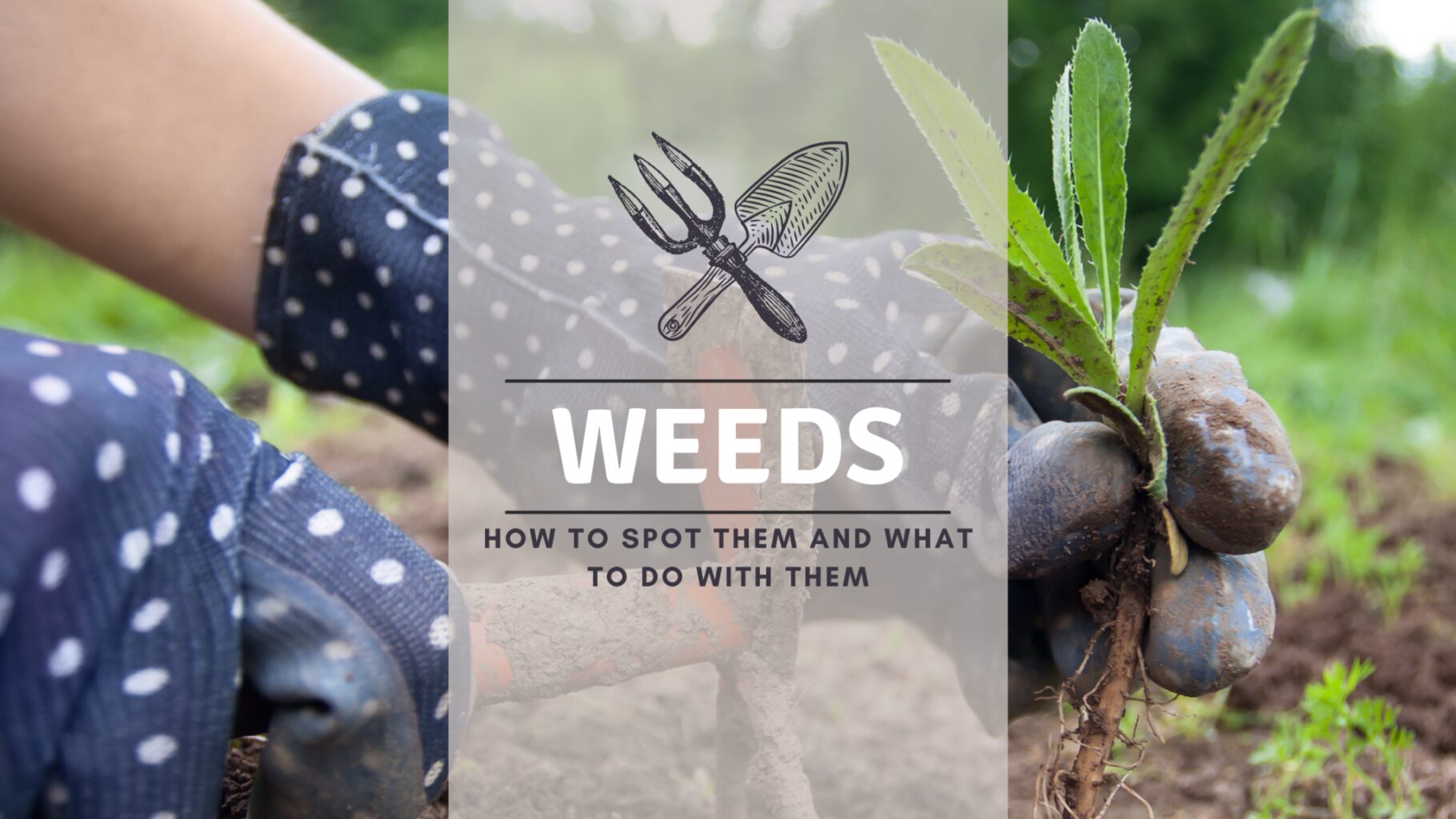
Leave a Comment
You must be logged in to post a comment.